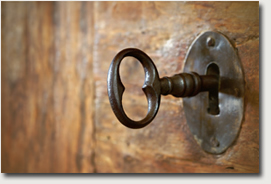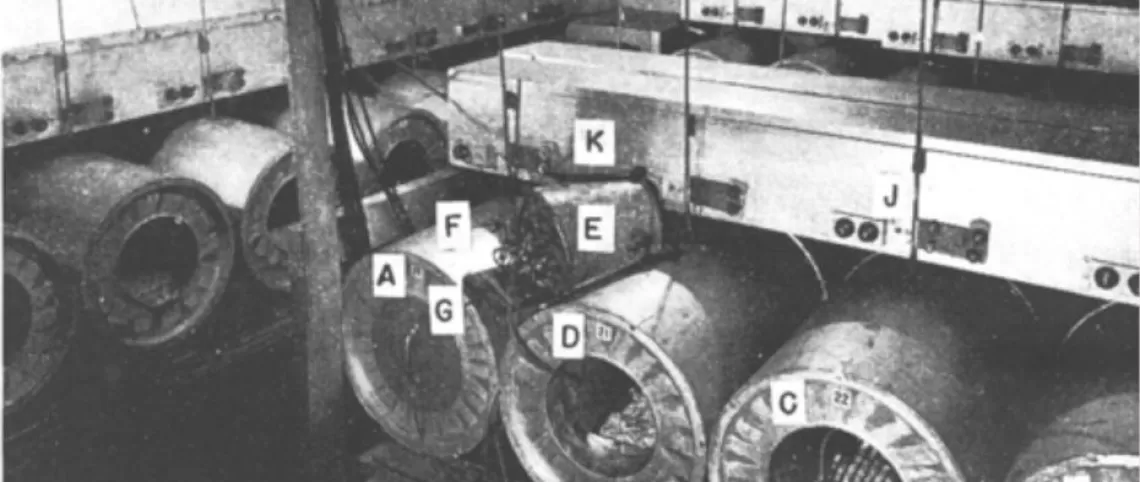
All behavior occurs in an environment of some kind or another. The environment may be surrounded by the organism (an internal environment) or the organism may be surrounded by the environment (an external environment). Environments may be natural or constructed. Sometimes it is difficult to separate the two. Is a workspace one or the other? A classroom? A home setting? Many environments are created for specific purposes, such as minimizing distractions and optimizing control by the features of interest to an experimenter, or parent or therapist. The air cribs shown here were designed to optimize comfort for infants and ease the burden of child care maybe a little for caregivers.
ENVIRONMENTS FOR RATS
Rat Chamber Described by Heron and Skinner (1939)
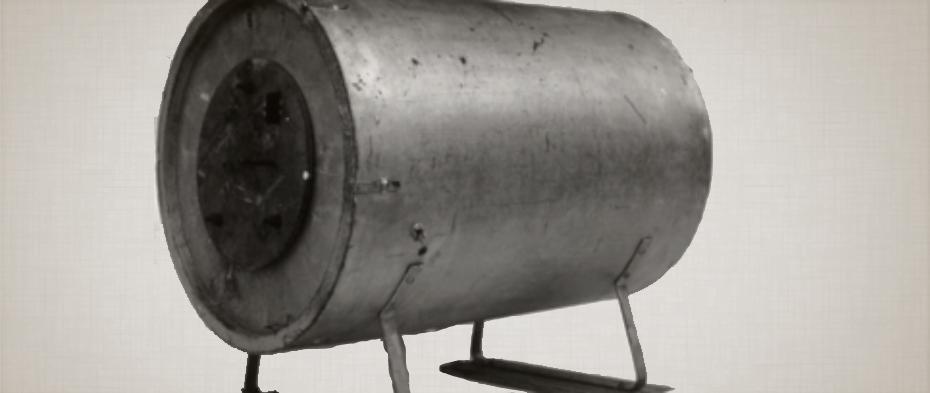
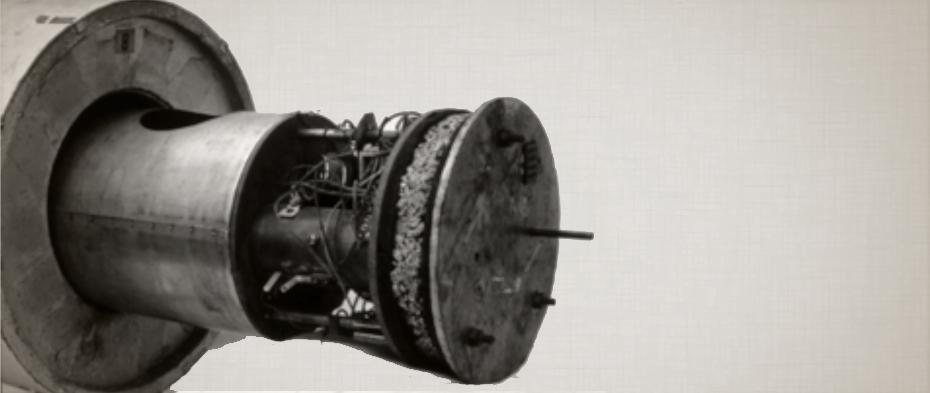
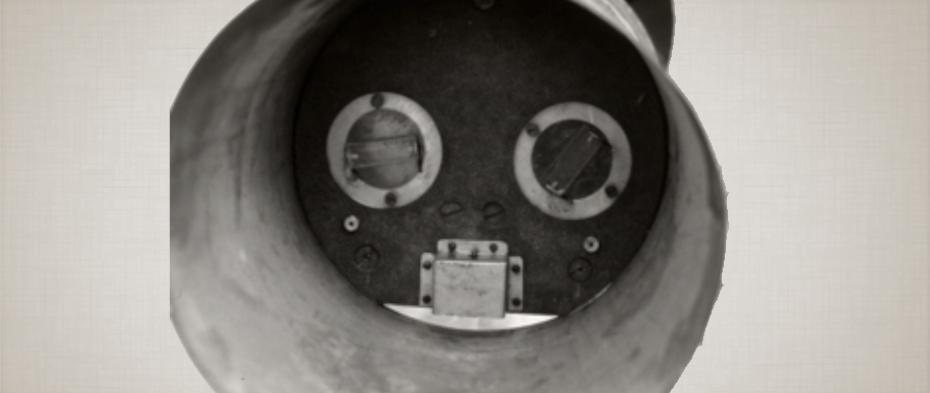
The first photograph in this display appeared in a research article reported in The Psychological Record (volume 3, pp. 166-176). It shows a grouping of several operant conditioning chambers for use with rats. Each is made of an old candy barrel that surrounds an insert housing a space for the rat and the control equipment necessary for the research.
The second photograph shows a chamber similar to these. This chamber is housed in the Department of Psychology at the University of Minnesota. It is to our knowledge the only surviving example of a chamber similar to the 24 that were reported in use in the article noted above.
A cork-like insulating material surrounds the work area on all sides. A slice of this insulation can be seen in the third photograph, which shows the work area slid out from the surrounding barrel. The work area where the rat is housed is to the left, accessible through the opening in the top. The right portion houses the apparatus for presenting stimuli, recording responses, and delivering reinforcers.
Skinner's Problem Box
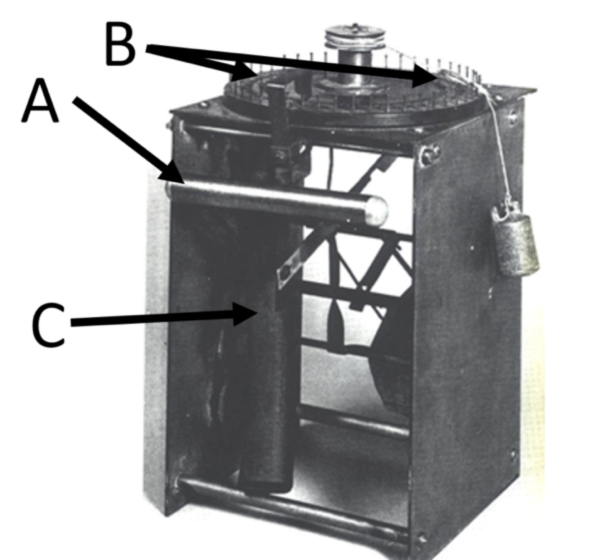
This device was given by Skinner to Fred Keller when Keller was teaching at Colgate University. It is a combination lever and food-pellet dispenser. Depressing the lever (labeled “A”) operates a series of gears such that the disc on the top moves to align a pellet placed in each small hole on the outer edge of the disc (labeled “B”) successively with a hole located on the platform on which the disc sits. The hole is located such that when the pellet falls through it it is channeled through the rubber tube (labeled “C”) and into a food cup (npt shown) originally attached to the tube and protruded into the operant chamber. Skinner’s labeling the device a “problem box,” perhaps done tongue-in-cheek, recalls Thorndike’s “puzzle box” experiments with cats, which led to his articulation of the law of effect.
ENVIRONMENTS FOR PIGEONS
Operant Chamber for Pigeons (1950)
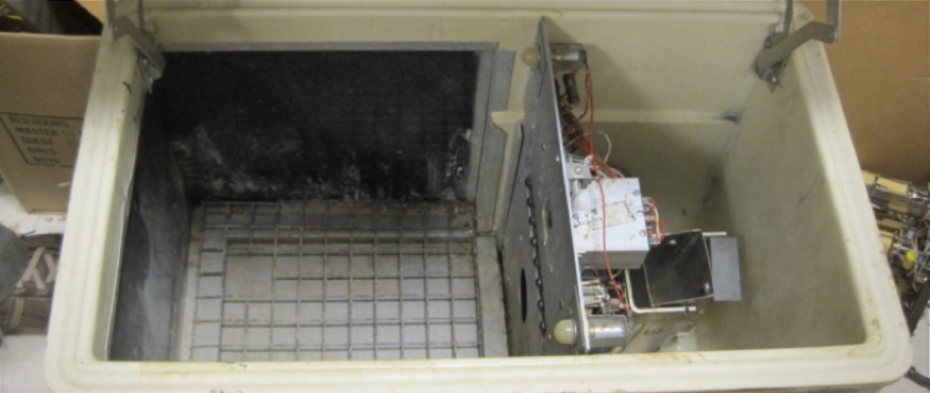
This operant chamber for pigeons is believed to have been used in some of the experiments that comprised Ferster and Skinner’s encyclopedic Schedules of Reinforcement. The chamber represents the state of the art for operant chambers of the 1950s. It is, in fact a Ted Williams model ice chest, sold widely by Sears and Roebuck during that period. It was modified for operant research with pigeons by separating the shell into two parts. The pigeon was placed in the left part and the right part housed the supporting electrical gear needed to present stimuli, record key-peck responses, and deliver grain through a grain hopper.
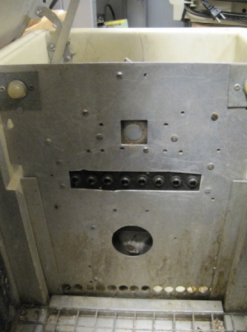 This second photograph shows a pigeon’s eye view of the work panel. The response key is the round circle inside the square cutout in the center of the panel about 4 inches from the top. A houselight, for general illumination on the chamber, is in the upper left corner of the panel. Below the response key there is a row of lights that are believed to have been as stimuli to indicate the passage of time or responses between reinforcement availability. The circular aperture below the lights is the access to the food hopper.
This second photograph shows a pigeon’s eye view of the work panel. The response key is the round circle inside the square cutout in the center of the panel about 4 inches from the top. A houselight, for general illumination on the chamber, is in the upper left corner of the panel. Below the response key there is a row of lights that are believed to have been as stimuli to indicate the passage of time or responses between reinforcement availability. The circular aperture below the lights is the access to the food hopper.
This chamber was not used to house the pigeons. They were placed in it only for the duration of an experimental session, typically an hour or so, but sometimes longer. At other times, the pigeons lived in a vivarium, or home cage area.
ENVIRONMENTS FOR OTHER NONHUMAN SPECIES
Discrimination Learning in Harbor Seals (1980)
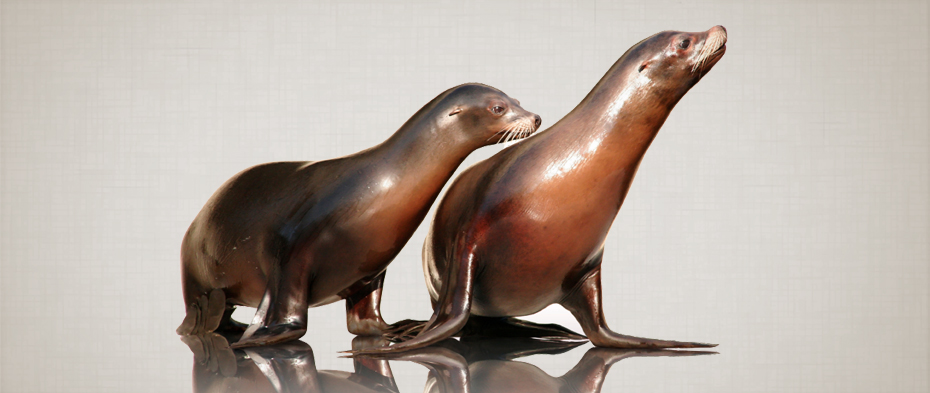
This apparatus was constructed from scratch by Dr. Betsy Constantine in the 1980s, who then used it to study the behavior of harbor seals. In the video clip she explains its construction and operation to several students.
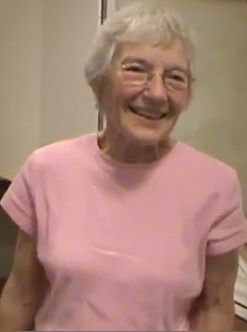
ENVIRONMENTS FOR HUMANS
Air Crib (1945)
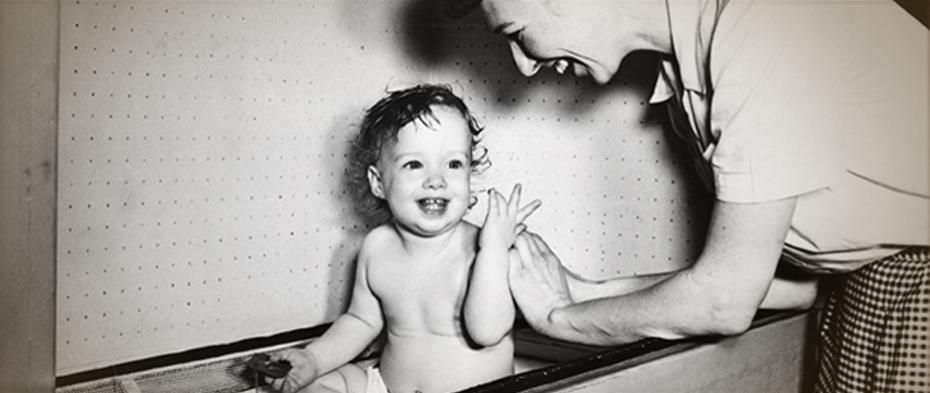
One of the earliest reports of environmental design for humans is a famous device conceived and built by B. F. Skinner for the comfort of his second daughter, Deborah. Deborah was born in the early 1940s, when the Skinners lived in Minneapolis, a city known for its extreme temperatures. Skinner wished to create a comfortable environment for his infant daughter; one that was warm, free of drafts, noise, and other things that might disturb her. Remember that in the 1940s insulating and heating a home or apartment could be a catch-as-catch-can affair, often with very uneven heat dispersion from room to room and without the benefit of air filters. Apartments were small and often there was no separate nursery for the infant. Furthermore, disposable diapers were still a convenience of the future. So, Skinner, ever the tinkerer with wood and electrical components, created what he first called an “air crib,” but later was described as a ”baby tender.” Its primary purposes were to keep his daughter warm and protected from the ambient noises present in any home, provide filtered air, and make cleaning up faster and easier. In the original version, a sheet could be rolled out across the bottom such that it could be changed easily. Because the environment was temperature controlled, it was unnecessary for the baby to wear nightwear, also meaning fewer things to wash in an era when washing was still a major task for many families. Covering the Plexiglas door of the air crib with a curtain allowed the child to sleep in the dark undisturbed by light from outside sources.
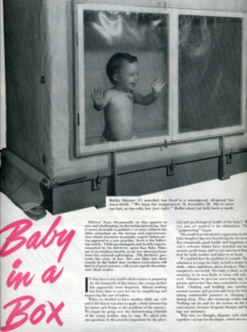 Skinner described the air crib and its use in a 1945 article, “Baby in a Box,” published in the Ladies Home Journal, and reflected further on the air crib years later. The famous photograph shows Deborah Skinner’s mother, Eve, playing with her while Deborah sat in that crib.
Skinner described the air crib and its use in a 1945 article, “Baby in a Box,” published in the Ladies Home Journal, and reflected further on the air crib years later. The famous photograph shows Deborah Skinner’s mother, Eve, playing with her while Deborah sat in that crib.
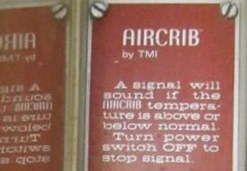 In retrospect, the original article’s title may have been unfortunate because it conjured up for many readers a vision of a larger version of his by then well-known “Skinner boxes” used in laboratory experiments with animals. The air crib as a result sometimes has been inappropriately portrayed as a place where his daughter was “raised” by her diabolical father, with an implication that she never was let out, and was used as a subject for his experiments much as he did his rats and pigeons. All patent nonsense of course. In fact, the air crib merely substituted for a more conventional baby crib. It was essentially a baby crib with all the bells and whistles, including a mobile-like toy. Of the latter, Skinner observed:
In retrospect, the original article’s title may have been unfortunate because it conjured up for many readers a vision of a larger version of his by then well-known “Skinner boxes” used in laboratory experiments with animals. The air crib as a result sometimes has been inappropriately portrayed as a place where his daughter was “raised” by her diabolical father, with an implication that she never was let out, and was used as a subject for his experiments much as he did his rats and pigeons. All patent nonsense of course. In fact, the air crib merely substituted for a more conventional baby crib. It was essentially a baby crib with all the bells and whistles, including a mobile-like toy. Of the latter, Skinner observed:
We have devised a number of toys which are occasionally suspended from the ceiling of the compartment . . . One toy is a ring suspended from a modified music box. A note can be played by pulling the ring downward, and a series of rapid jerks will produce Three Blind Mice.
The air crib was not functionally different from a contemporary nursery room in a comfortable modern home, except that it was smaller and could be kept in the living room (where friends of mine kept theirs during their child’s infancy – admittedly and literally it was indeed the centerpiece of their very small apartment’s living room). Deborah was put in the air crib to rest and to play when she wanted to, but otherwise was raised in the typical way of infants of that era.
The first air cribs were home-made of plywood and whatever parts could be assembled to provide the needed functions. Many of those early home-made air cribs still are used today. For the DIY readers looking for a project, a set of instructions for making an air crib can be found at GearAbility.

